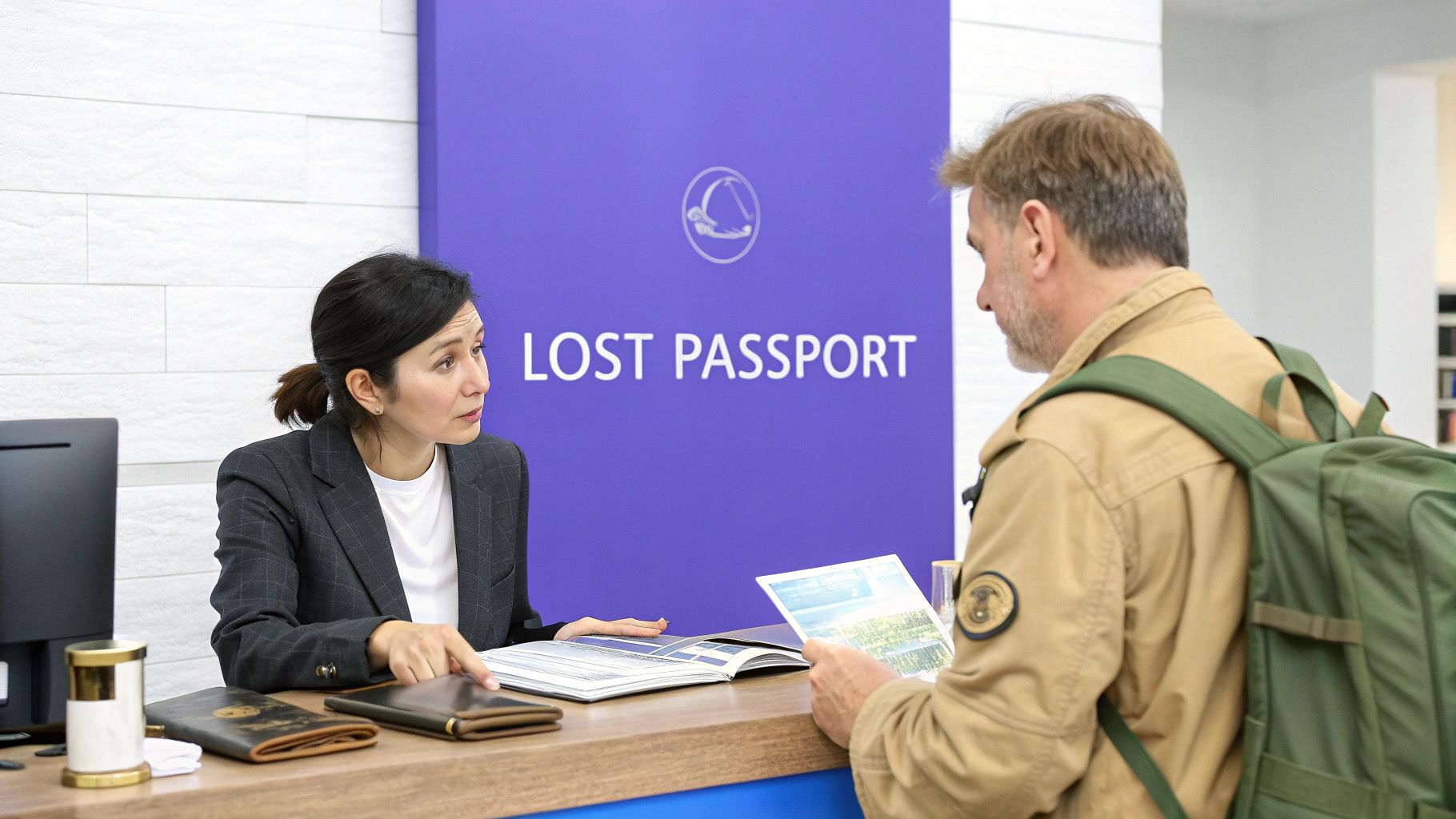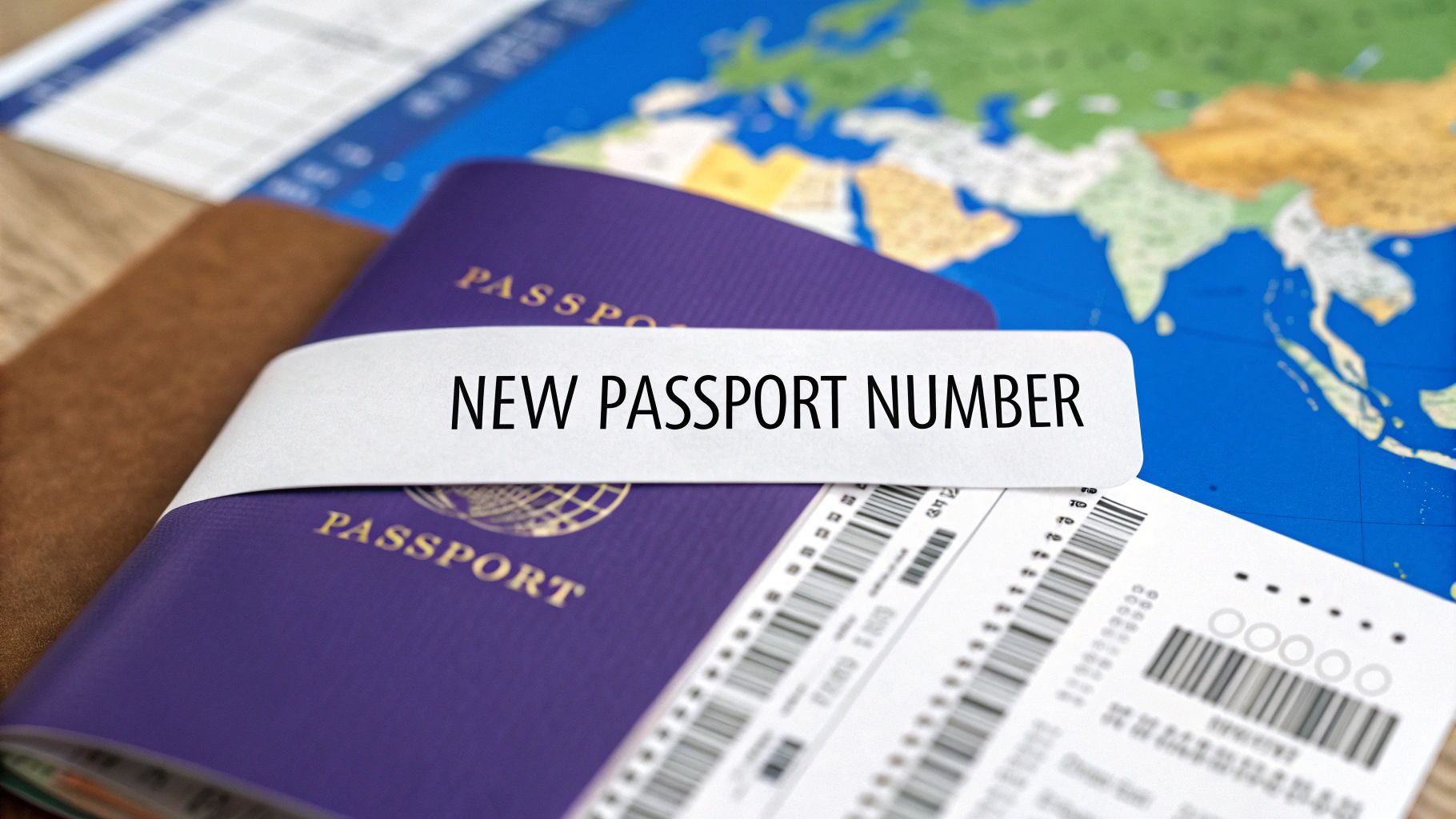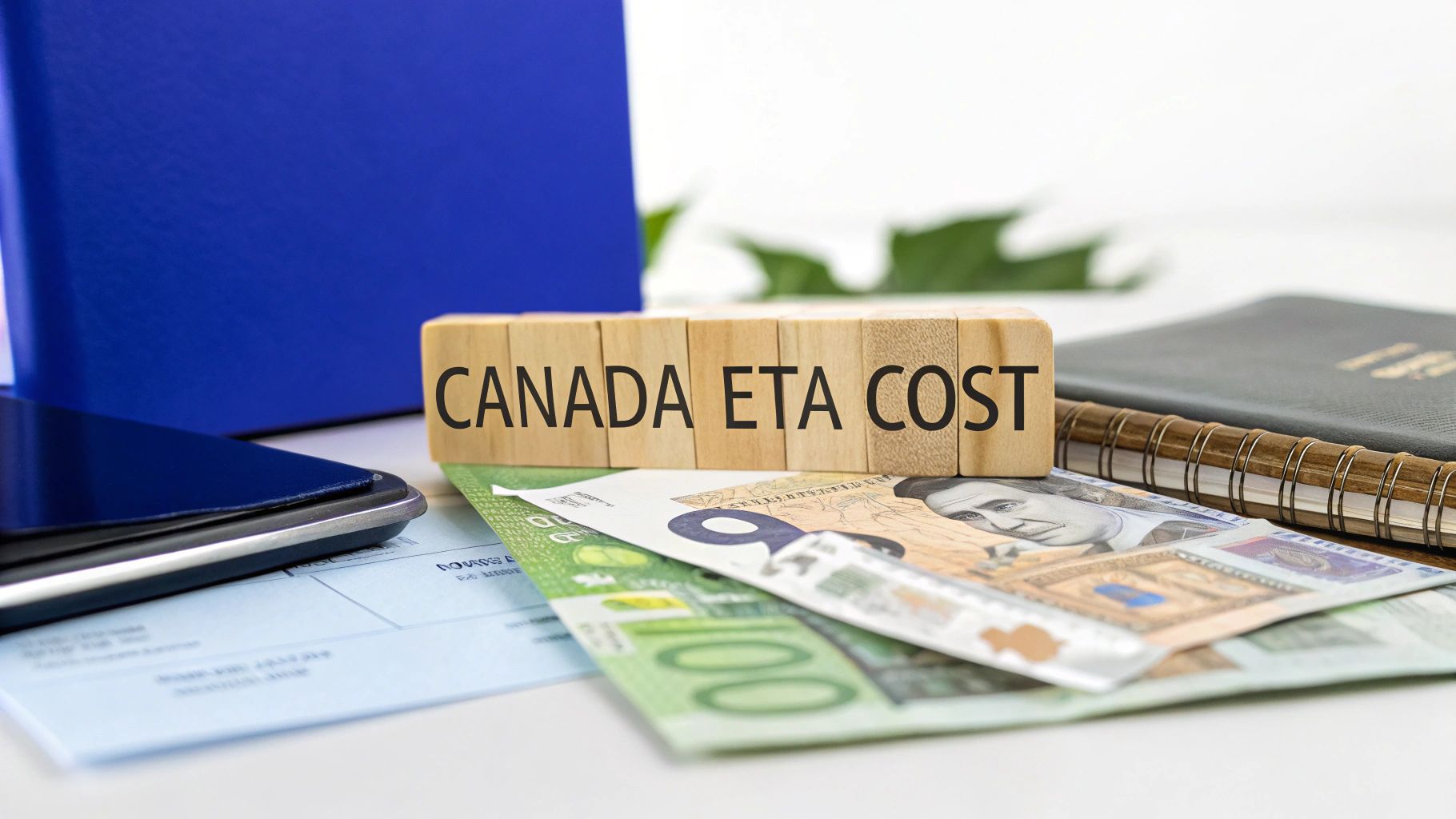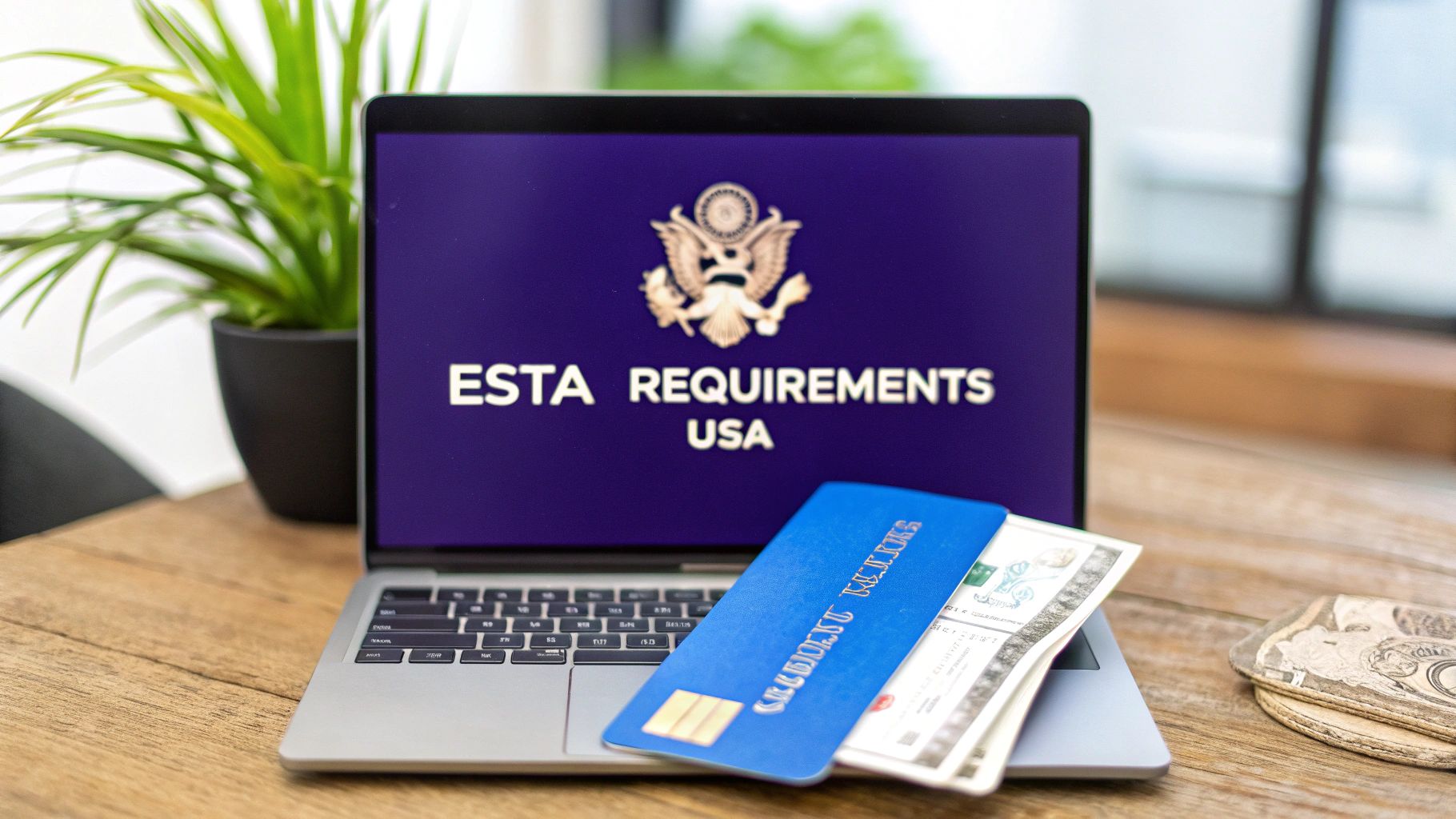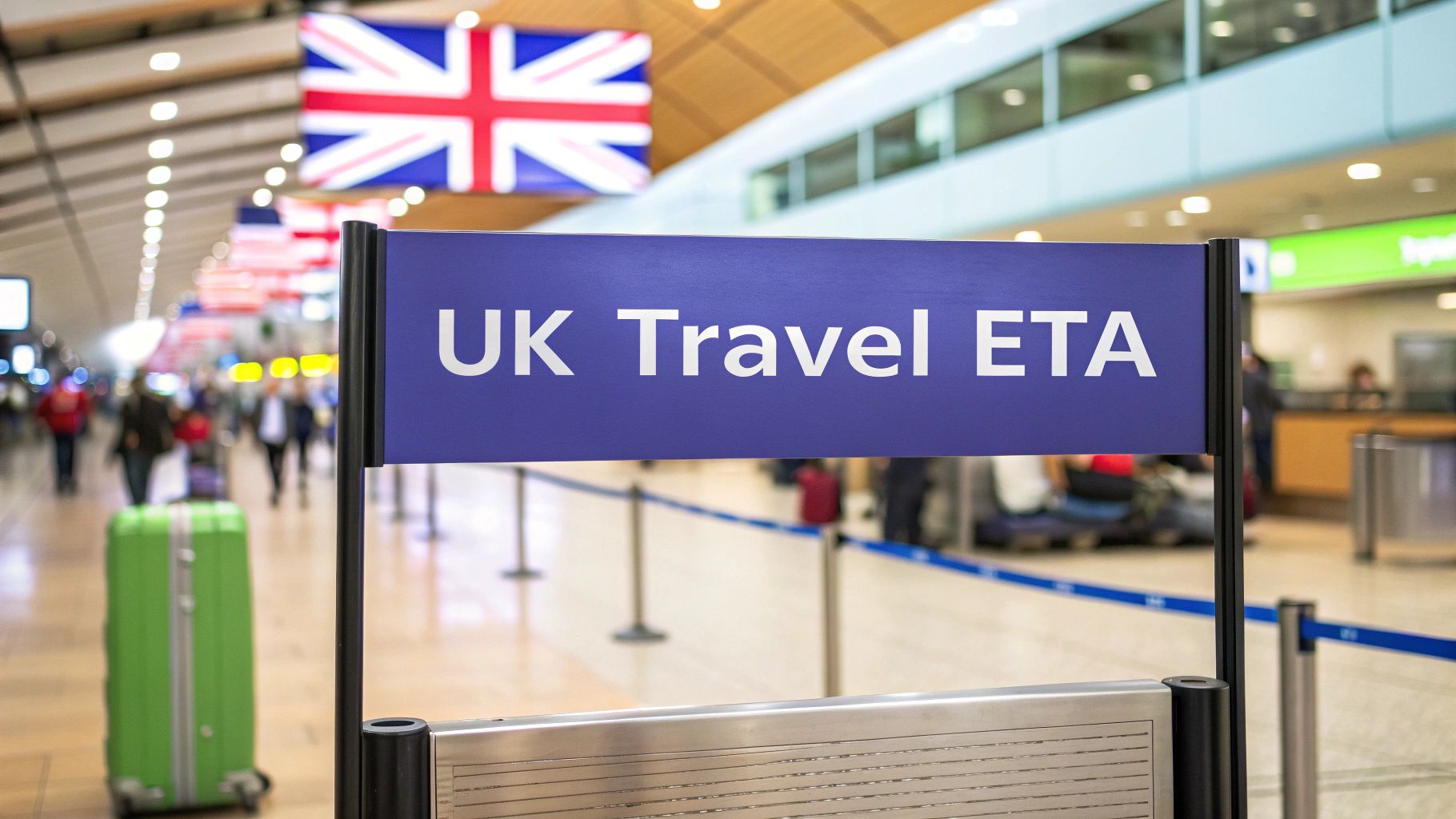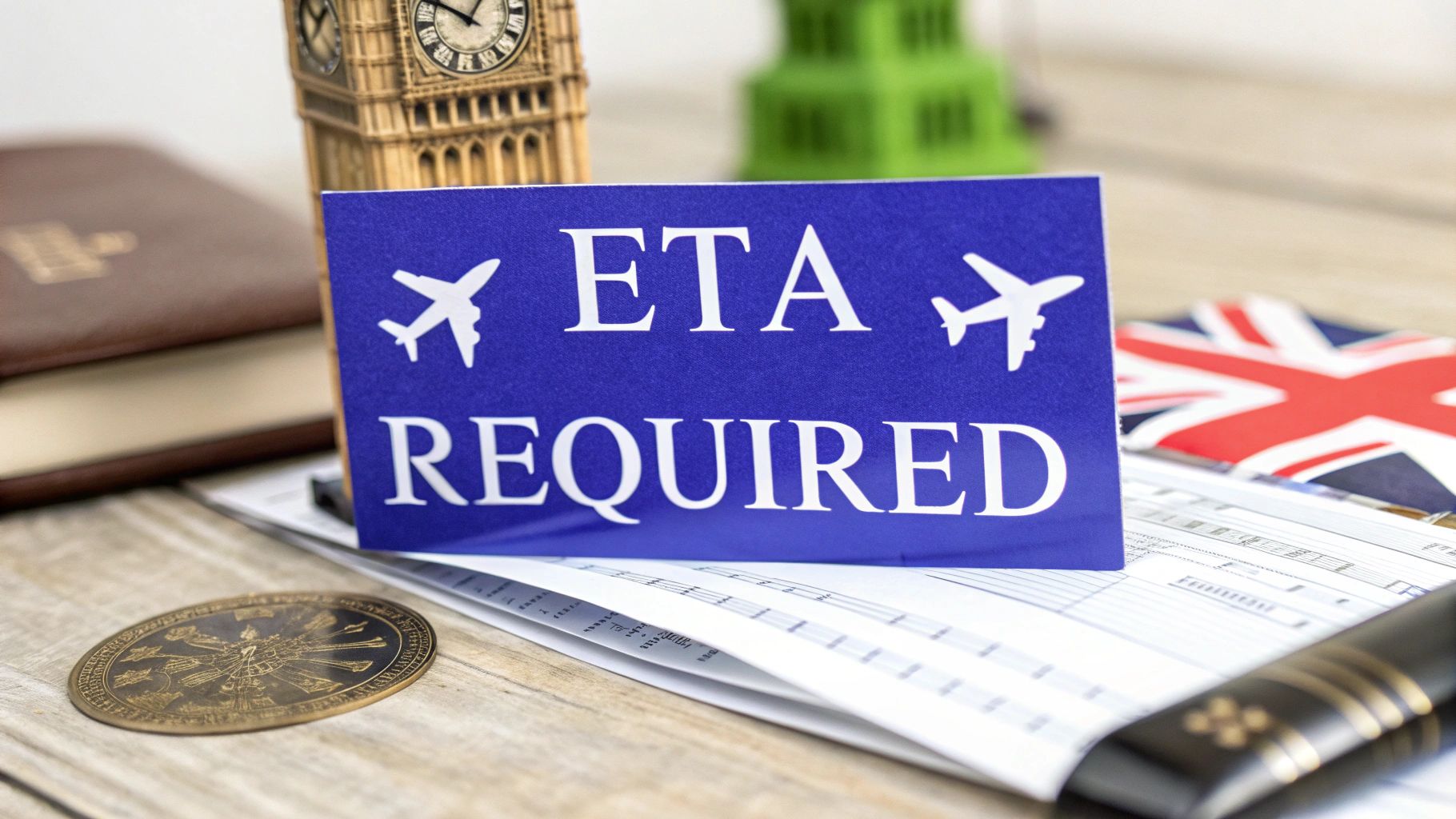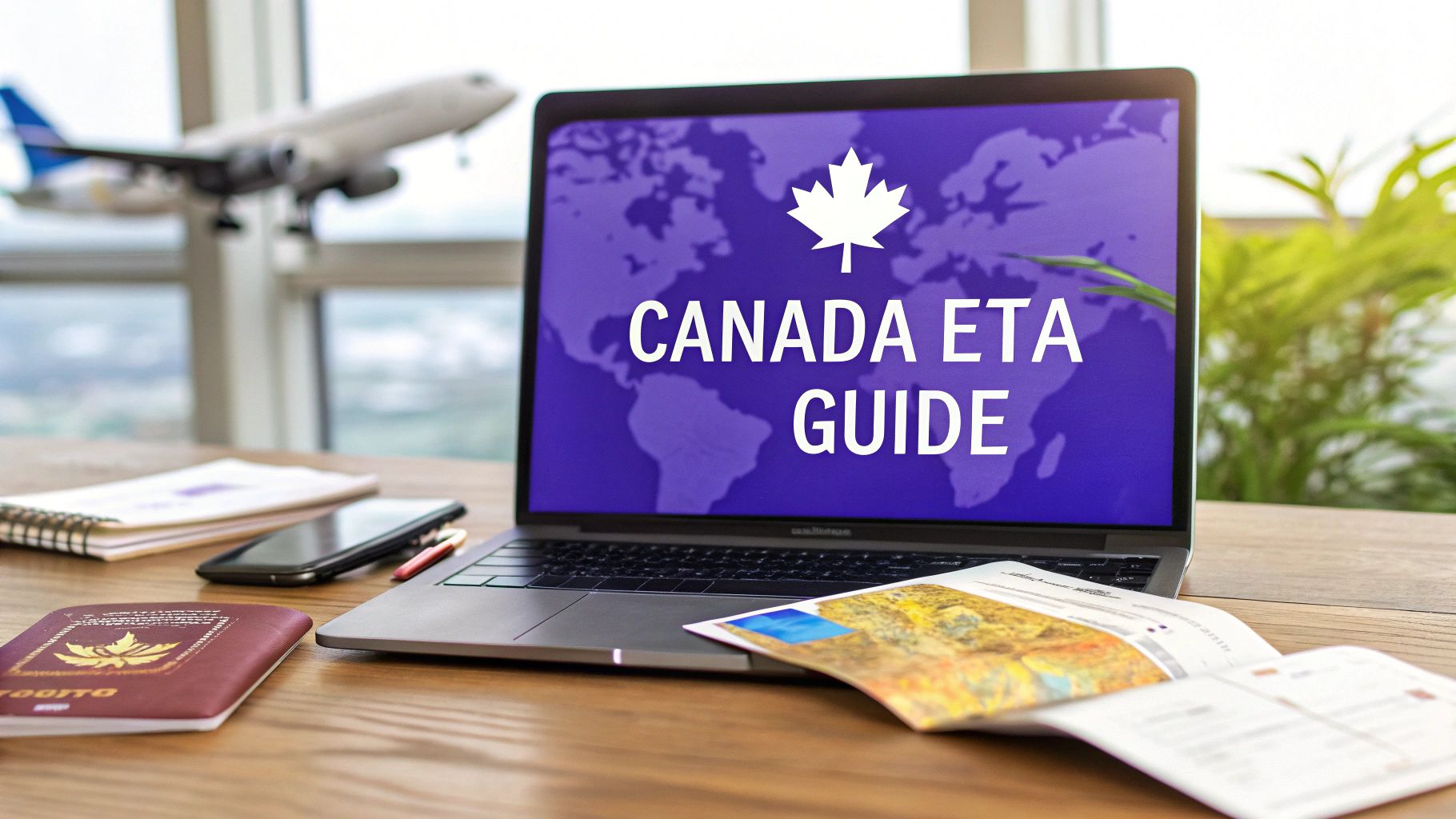
Your Guide to Canada eTA Requirements
Planning a trip to Canada? The first thing to get straight is the entry requirements, and for many travelers, that starts with understanding the Canada eTA.
An eTA, or Electronic Travel Authorization, is a mandatory entry requirement for visa-exempt foreign nationals who are flying to or transiting through a Canadian airport. Think of it as a digital green light that's electronically linked to your passport, making your arrival smoother and more secure.
Your Guide to the Canada eTA

The Canada eTA isn't a visa. It's a much lighter, faster alternative for citizens from countries that have a visa-waiver agreement with Canada. This system lets Canadian authorities pre-screen travelers before they even board their flight, which is a big win for both national security and the flow of tourism.
Introduced back in 2016, the eTA program was designed to manage the growing number of visitors more efficiently. As of February 2024, Canada has expanded its eTA program to include citizens from 67 countries, simplifying the process for millions of travelers. If you want to learn more about how digital travel documents are changing global mobility, you can check out our other articles on visiting Canada.
To make it even clearer, here's a quick breakdown to help you figure out if you need an eTA for your trip.
Quick Guide to Canada eTA Eligibility
| Traveler Type | eTA Required? | Key Notes |
|---|---|---|
| Visa-Exempt Citizen (by air) | Yes | If your country is on the visa-exempt list and you're flying, you need an eTA. This includes tourists and business travelers. |
| Visa-Exempt Citizen (by land/sea) | No | If you're driving from the U.S. or arriving by cruise ship, an eTA is not required. You'll just need your passport. |
| U.S. Citizen | No | U.S. citizens are exempt and only need a valid U.S. passport to fly to Canada. |
| Canadian Permanent Resident | No | You must travel with your valid Canadian Permanent Resident (PR) card. |
| Lawful U.S. Permanent Resident (Green Card holder) | Yes | You must have a valid passport from your country of nationality and an eTA to fly to Canada. |
| Traveler with a Valid Canadian Visa | No | If you already hold a valid Canadian visa, you do not need to apply for an eTA. |
This table should give you a good idea, but let's dive into the specifics of who needs to apply and who doesn't.
Who Must Apply for a Canada eTA?
The main group that needs an eTA is citizens from visa-exempt countries. If you hold a passport from a place like Australia, Japan, South Korea, or most European nations and you plan to fly into Canada, getting an eTA is a must.
This rule applies even if you're just passing through. That's right—if you have a layover in a Canadian airport on your way to another country, you still need one.
To summarize, you'll need an eTA if you are:
- A visa-exempt foreign national from one of the eligible countries.
- Arriving in Canada by air. The eTA is exclusively for air travel.
- A short-term visitor, such as a tourist, business traveler, or someone visiting family for up to six months.
Who Is Exempt From the eTA Requirement?
Now, not everyone needs an eTA, and knowing if you're exempt can save you time and a potential headache.
The biggest group exempt from the Canada eTA is U.S. citizens. All they need to show is a valid U.S. passport. Simple as that.
Additionally, you don't need an eTA if you:
- Already have a valid Canadian visa.
- Are entering Canada by land (like driving in from the U.S.) or by sea (on a cruise ship, for instance).
- Are a French citizen living in St. Pierre and Miquelon.
- Are a foreign national who is a lawful permanent resident of the United States (a Green Card holder).
Navigating these rules can feel a bit tricky, but getting it right is the first step to a smooth trip.
Confirming Your Eligibility for a Canada eTA
So, you think you might be eligible for a Canada eTA? It's a bit more than just checking which country your passport is from. The rules have specific conditions, and with recent changes, it's easy to get confused.
First things first: the eTA is designed for visa-exempt nationals who are flying into Canada. If you're coming for tourism, a business meeting, or just passing through on your way somewhere else, you're on the right track. The catch? Your stay can't be longer than six months.
This decision tree gives you a quick visual breakdown of the main questions you need to answer.
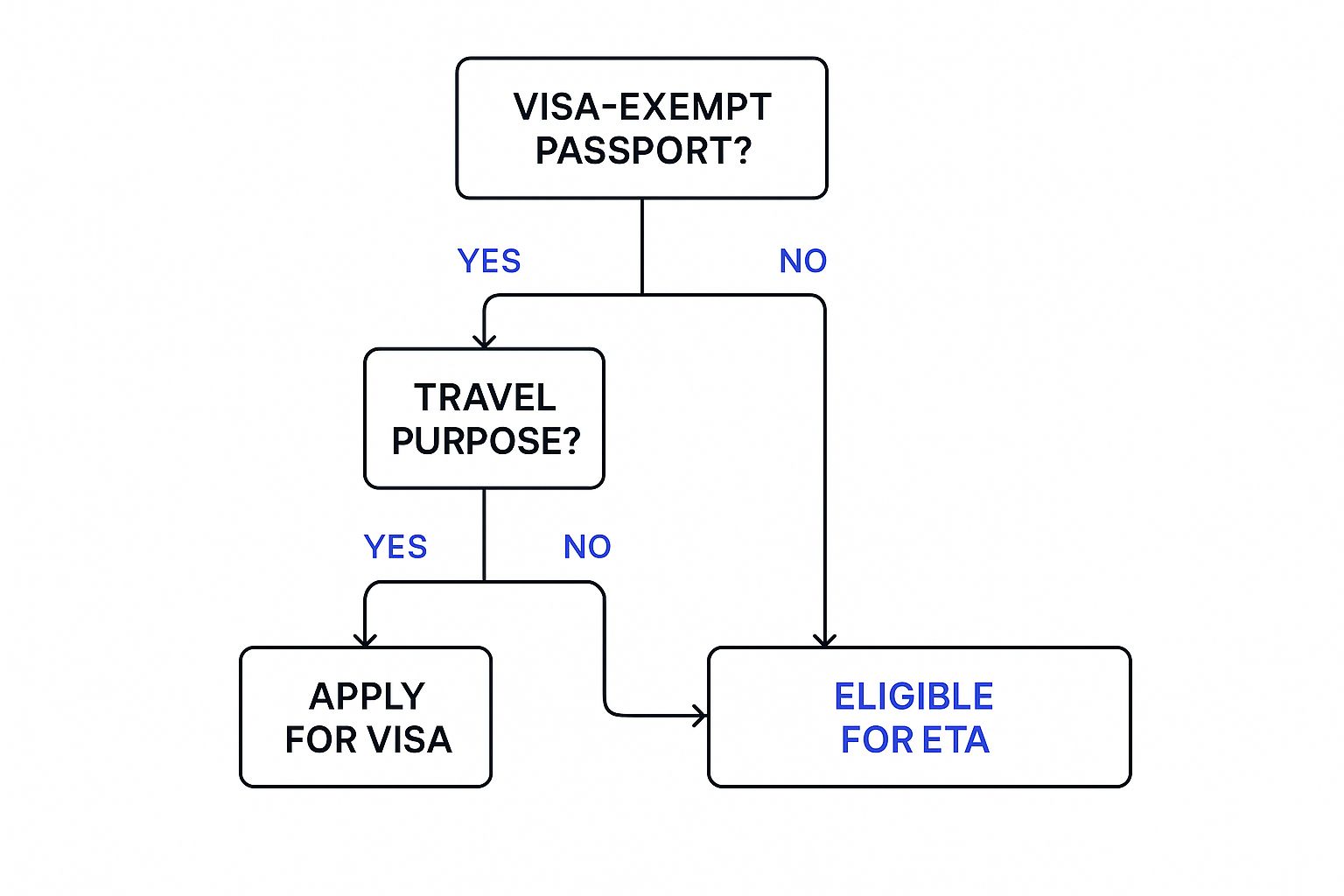
As you can see, it really boils down to your nationality, why you're traveling, and how long you plan to stay. Getting these right points you to the correct travel document.
Special Conditions for Newly Eligible Countries
Good news for many travelers! On June 6, 2023, Canada expanded its eTA program to include citizens from 13 new countries, including places like the Philippines, Thailand, Morocco, and Argentina. This is a big deal because it allows eligible travelers from these nations to get a simple eTA instead of going through a full visitor visa application.
But there's a very important string attached for anyone from these 13 countries. You only qualify for the eTA if you meet one of two conditions:
- You've held a Canadian visitor visa sometime in the last 10 years.
- You currently have a valid U.S. non-immigrant visa (like a tourist or business visa).
Let’s make this real. Imagine you're a citizen of the Philippines with a valid U.S. tourist visa, planning a trip to Toronto. You're in luck! You can apply for an eTA online. But if you've never had a Canadian visa and don't hold a U.S. visa, you'll need to apply for a standard Canadian visitor visa instead.
Knowing these little details is what separates a smooth application from a frustrating one.
Key Takeaway: Don't just check your nationality—check your travel history too. These special rules for the 13 new countries are a common stumbling block and a major reason why some eTA applications get denied.
Navigating the Canada eTA requirements can feel tricky. A small misunderstanding could derail your travel plans. For a deeper dive into how an eTA stacks up against a visa, check out our full guide on traveling to Canada with a visa vs. an eTA.
Gathering Your Documents for the Application

A smooth Canada eTA application starts before you even open the form. The secret to a quick, painless process is all in the prep work. If you gather a few key items beforehand, you’ll sidestep the common hiccups and get your application done in one go.
Think of it like getting your ingredients ready before you start cooking—it just makes everything flow better. The list of Canada eTA requirements is refreshingly short, but every single item on it is absolutely critical. Let’s run through what you’ll need.
Your eTA Application Checklist
The most important item on your list is, without a doubt, your passport. It must be a valid, ordinary passport from a visa-exempt country. Keep in mind that service, diplomatic, or temporary passports often have different rules, so double-check you're using the right one.
Here’s what to have on your desk before you begin:
- A Valid Passport: Your eTA is tied directly to your passport number. The information you enter must match what’s on your passport perfectly. No typos, no shortcuts.
- An Active Email Address: This is where the Canadian government will send all communications, including your approval. Use an email you check all the time and make sure it’s spelled correctly.
- A Credit or Debit Card: You'll need a way to pay the application fee. Most major cards like Visa, Mastercard, and American Express are accepted.
Pro Tip: Take a quick look at your passport's expiration date. It's not an official rule, but it's a very strong travel recommendation to have at least six months of validity left from the day you plan to enter Canada. This simple check can save you from a lot of trouble with airlines or at the border.
Why Accuracy Is Non-Negotiable
A tiny mistake—like swapping two numbers in your passport ID or a simple misspelling of your name—can make your eTA completely invalid. This could mean getting turned away at the boarding gate, which is a stressful and costly way to start a trip.
This is where having an expert eye review your application can be a game-changer. Using a trusted third-party application assistance provider like AssistEntry means a trained specialist goes over every detail to make sure it's accurate and compliant before it's submitted. For a fee starting from $79 (all costs included), their service acts as your safety net, catching errors and seriously boosting your chances of getting approved on the first try. To learn more about how this digital pass works, check out our complete guide to the Electronic Travel Authorization for Canada.
How to Apply for Your eTA Without Mistakes
Navigating the official Canada eTA application can feel like walking a tightrope. The form seems simple enough, but a single typo in your passport number or a small data entry error can get your application instantly rejected.
Worse, you could end up with an invalid eTA and not even know it until you're denied boarding at the airport. It's a stressful and costly situation that’s entirely preventable.
The key is precision. Every single detail must perfectly match your passport. Unfortunately, it's easy to make common mistakes, like misreading a question about your travel history or eligibility, which can sink an otherwise perfect application. Having an expert double-check your work can make all the difference.
For travelers who want to be certain everything is done right, using an application assistance service is a smart move. These services are built to catch those little errors before they turn into big problems, ensuring your application is flawless.
Simplify Your Application with Expert Help
One of the most trusted names in the game is AssistEntry, a third-party application assistance provider. Instead of you having to decipher complicated government forms, their team of experts does the heavy lifting. They’ve built a simple, user-friendly platform that walks you through each step, making the whole thing clear and foolproof.
Here’s where their service really shines:
- Full Application Verification: Before submitting anything, an expert reviews every single field for accuracy, cross-referencing all details with your documents.
- Error-Checking and Compliance Review: They scan for common mistakes and make sure your application meets all current Canada eTA requirements.
- Increased Approval Chances: A clean, compliant application has a much higher chance of getting approved quickly.
This screenshot gives you a peek at the clear, easy-to-use interface on the AssistEntry platform.
The form breaks down all the required information into logical chunks, which seriously cuts down on the chances of confusion or missing a key detail.
Why Choose an Assistance Service?
Sure, you can apply directly through the government website. But the real value of a service like AssistEntry is the peace of mind it gives you. For a fee starting from $79 (which includes the government fee and all costs), you’re not just paying someone to submit a form—you’re paying for expertise and a safety net.
Think of it like hiring a professional to do your taxes. You could do it yourself, but a small mistake could be costly. An expert ensures it's done right the first time, saving you from headaches and delays down the road.
This approach is perfect for first-time applicants, busy travelers, or anyone who just wants to eliminate the risk of their travel plans getting derailed by a preventable error. To simplify your eTA application and increase your chances of approval, consider using AssistEntry.com—their experts guide you through the entire process, starting from just $79.
So, Your eTA Is Approved. What's Next?
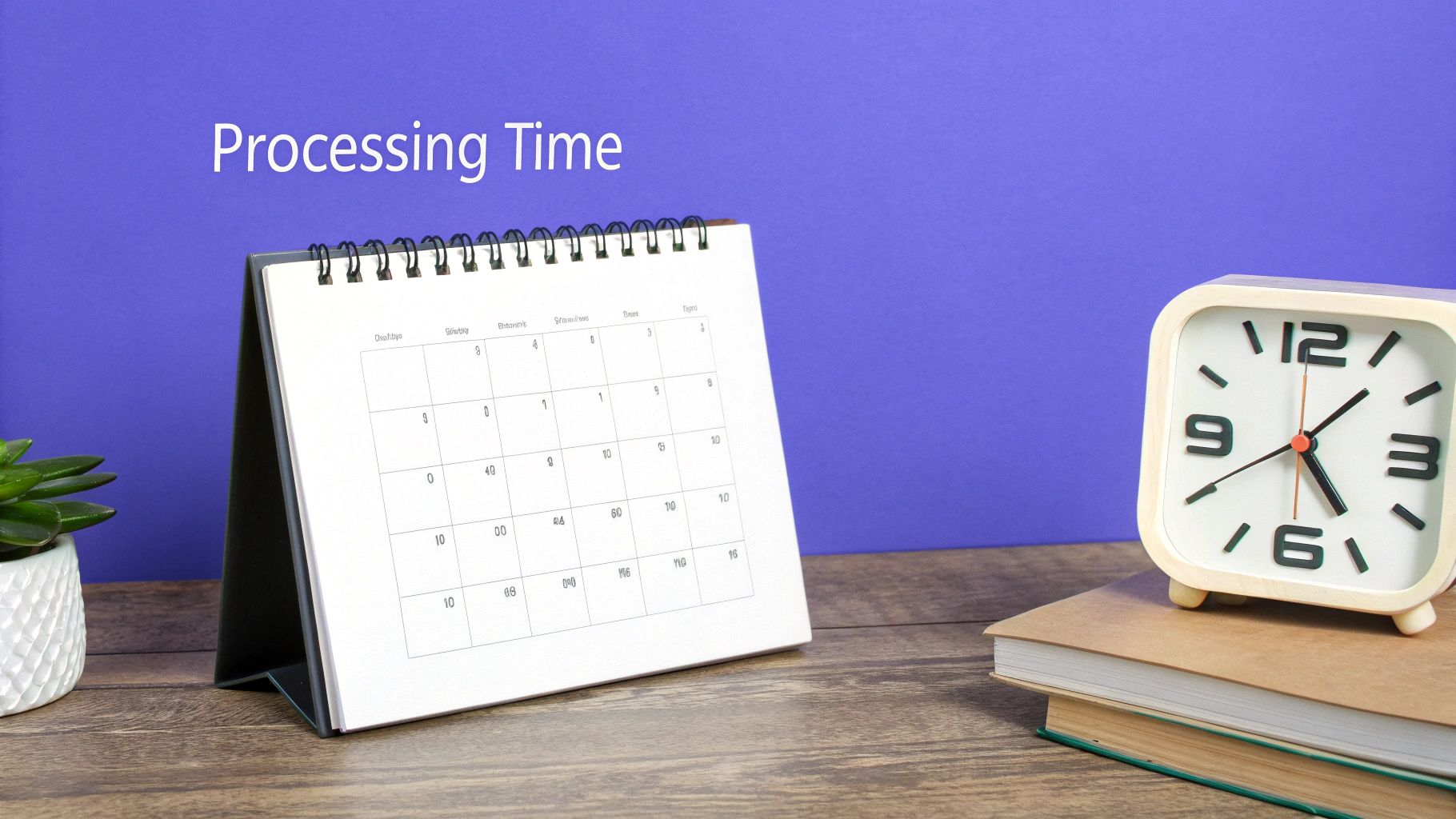
Congratulations, you've got your approved Canada eTA! This is the green light you were waiting for, but it’s worth taking a moment to understand exactly what this digital document does for you. Knowing the details will ensure your trip goes off without a hitch.
Think of your eTA as a long-term key to Canada. It’s generally valid for up to five years from the day it’s issued. The only catch? Your eTA is electronically tied to your passport. If your passport expires before those five years are up, your eTA expires right along with it. A new passport always means a new eTA.
This generous validity period is fantastic for frequent visitors. It allows you to make multiple trips to Canada, and you can stay for up to six months each time—plenty of time to explore the Rockies, visit family, or handle business matters.
The Fine Print on Your Approved eTA
Once that approval email lands in your inbox, it's a good idea to get familiar with what your eTA allows, and what it doesn't. Here are the key things to remember:
- Air Travel Only: Your eTA is specifically for arriving in Canada by plane. If you’re driving across the border or arriving by bus, train, or cruise ship, you’ll just need your passport and other standard travel documents.
- Multiple Entries: This isn't a one-and-done pass. You can fly to Canada as many times as you want while your eTA is valid, as long as each visit is no longer than six months.
- Not a Guarantee of Entry: An eTA gets you on the plane, but the final say always belongs to the Canada Border Services Agency (CBSA) officer who greets you on arrival.
Important Reminder: You absolutely must travel with the passport you used for your eTA application. If you show up with a different one, the airline's system won't find your eTA, and you won't be allowed to board your flight.
A Look at What’s Coming: The Future of eTA Security
Canada is always updating its border technology to keep up with global security standards. Because of this, travelers can expect the eTA program to evolve.
Looking ahead to 2025 and beyond, Canadian immigration officials are planning to add biometric data collection to the eTA application. According to IRCC's 'Forward Regulatory Plan 2025-2027,' this will most likely involve submitting a digital photo for facial recognition to better verify your identity.
This isn’t designed to make things difficult—it’s a security step similar to systems already used by many other countries. For travelers, it will probably just mean uploading a photo from your phone or computer during the application. You can learn more about these upcoming Canadian travel authorization changes to stay informed.
Common Questions About Canada eTA Requirements
Even after you've got the basics down, a few questions about the Canada eTA requirements are bound to pop up. It's totally normal. Here, we'll walk through some of the most common things travelers ask, giving you clear answers so you can plan your trip without any guesswork.
One of the biggest questions is always about processing time. While most eTA applications get the green light within minutes, some can take a few days if they need a closer look. That’s why we always tell people to apply for Canada eTA online well before their travel date—it saves a ton of last-minute stress.
Another common worry is what happens if an application is denied. A denial isn't the end of the road. It just means you'll likely need to apply for a traditional visitor visa, which is a more in-depth process.
Key Questions for Families and Frequent Travelers
Things can get a little more complicated when you're traveling with kids or if you're a frequent flyer whose passport details might change. These are the little logistical things that can trip people up.
Here are the straightforward answers you need:
- Do my children need their own eTA? Yes, every single person, no matter their age, needs their own individual eTA. This includes infants and toddlers, even if they're listed on a parent's passport. Each child needs their own application.
- What if I get a new passport? Your eTA is tied directly to your passport number. If you get a new passport—because it expired, you lost it, or changed your name—your old eTA is no longer valid. You must apply for a new eTA using your new passport details.
- Can I use an eTA to enter Canada by land? Nope. The eTA is only for travelers arriving by air. If you’re driving up from the U.S. or taking a bus or train, all you need is your valid passport.
Traveler Tip: Before you hit submit, double-check every digit of your passport number on the eTA application. It has to be an exact match with the passport you'll be traveling with. Even a tiny typo can invalidate your eTA.
Getting these details right is crucial for a smooth start to your trip. It's also smart to think about other countries you might be visiting. For example, if you're also heading to the United States, you'll need a different authorization, like the ESTA for U.S. travel, which has its own set of rules.
Nailing the details now means you can focus on the fun parts of your trip later, not the paperwork.
Want to make sure your Canada eTA visa application is perfect? Let the experts at AssistEntry.com handle it. Our specialists check every detail to give you the best shot at approval. Services start at just $79, which includes the government fee. Take the stress out of your travel prep by visiting the AssistEntry Canada eTA page to get started.
